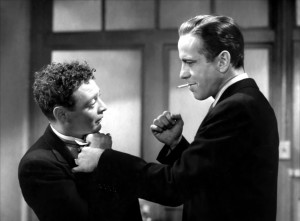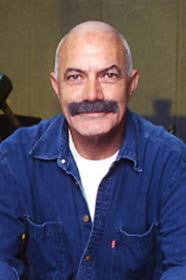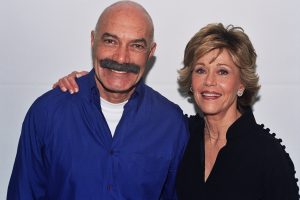 Joel Cairo, played in the 1941 version of The Maltese Falcon by Peter Lorre, was based on a criminal Dashiell Hammett had arrested for forgery in Pasco, Washington, in 1920.
Joel Cairo, played in the 1941 version of The Maltese Falcon by Peter Lorre, was based on a criminal Dashiell Hammett had arrested for forgery in Pasco, Washington, in 1920.
In Hammett’s novel, the character is homosexual, but to avoid censorship problems, this was downplayed in the movie.
Even so, Cairo is still noticeably effeminate. For instance, Cairo’s calling cards and handkerchiefs are scented with gardenias. He also fusses about his clothes and becomes upset when blood from a scratch ruins his shirt. And if you look carefully, he makes subtle fellating gestures with his cane during his interview with Sam Spade (Bogart).
In the novel, Cairo is referred to as “queer” and “the fairy,” but the film could only hint at homosexuality. It is mentioned by The Celluloid Closet, a documentary based on Vito Russo’s book, about how Hollywood films treated homosexuality in the studio era.
The 1941 film is the third film version of the novel. The first version, made in 1931, starred Ricardo Cortez as Sam Spade and Bebe Daniels as Brigid O’Shaughnessy.
The second, titled Satan Met a Lady, in 1936, starred Warren William and Bette Davis. It was rewritten as a light comedy, changing many elements of the story.
Warner was prevented by the Hays Office from re-releasing the 1931 version due to its “lewd” content. In 1966, unedited copies of this version were shown in the U.S. for the first time
Huston’s remake contained one riske element. When the police implicate Spade in his partner’s murder, Spade asks Detective Polhaus, “What’s your boyfriend gettin’ at, Tom?”
Elisha Cook Jr., a character actor, was cast by John Huston as Wilmer. Like Cairo, Wilmer has also been seen by some critics[ as homosexual, primarily because of the use of “gunsel,” meaning a young homosexual in a relationship with an older man, to describe him.
Some gay critics have also focused on the falcon as a phallic signifier; the way it is treated and touched by various characters.










